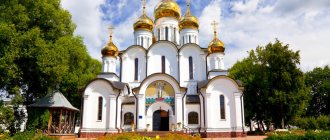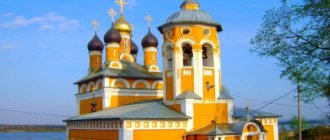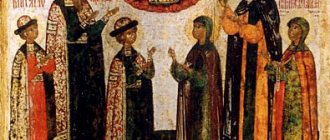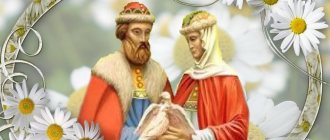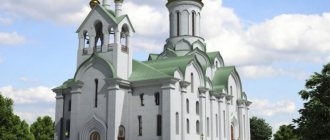The history of the Old Russian state was preserved primarily thanks to chronicles. One of the earliest and most famous is “The Tale of Bygone Years” (PVL). It is from this great work of ancient Russian literature that the history of Rus' is still studied. Unfortunately, its original has not survived. Only later editions made by scribes of that time have survived to this day.
History of creation
The author of the famous chronicle is considered to be the monk of the Kiev-Pechersk Monastery Nestor. His last name was not established. And there are no mentions of him in the original; they appear only in later editions. PVL was written on the basis of Russian songs, oral histories, fragmentary written documents and observations of Nestor himself.
The work was written at the turn of the 11th and 12th centuries. The exact year in which The Tale of Bygone Years was written is unknown, but there are several assumptions about this . Historians A. A. Shakhmatov and D. S. Likhachev believe that the main part of the work was created back in 1037, and then it was supplemented with new information from various chroniclers. Nestor's "Tale of Bygone Years" was written in 1110 - 1112. When compiling it, he was based on information from earlier documents.
However, the oldest edition that has come down to us was written much later and dates back to the 14th century. Its authorship belongs to the monk Lawrence. It is according to this and some other versions that modern historians form a picture of the events of that time.
Life of St. Nestor the Chronicler
The Monk Nestor was born around 1056 in Kyiv. As a seventeen-year-old youth, he became a novice of the Kiev-Pechersk Monastery with the Monk Theodosius. He received tonsure from Abbot Stephen, successor of Theodosius. While staying in the monastery, Nestor served as a chronicler.
Painting by Vasnetsov “The Chronicler Nestor” 1919. Photo: Public Domain
Nestor died around 1114. He was buried in the Near Caves of St. Anthony of the Pechersk Lavra. A liturgical service in his memory was composed in 1763.
The Orthodox Church honors his memory on November 9 and October 11 - during the feast of the Council of the Reverend Fathers of the Kiev-Pechersk in the Near Caves, as well as on the 2nd Week of Lent, when the Council of all the Kiev-Pechersk Fathers is celebrated.
Contents of “The Tale of Bygone Years”
The chronicle covers the history of the Russian state from the birth of the Slavs. It includes several types of narrative, each of which is important for researchers in its own way. The chronicle includes:
- Weather records (documentary materials presented sequentially, indicating dates).
- Legends and tales. Most often these are stories about military exploits or religious legends.
- Descriptions of the lives of saints and princes.
- Official documents and decrees.
Stylistically, these passages do not always fit together.
However, they are united by one feature: throughout the entire work, the author only retells the events that happened and conveys the stories of other people, without expressing his attitude and without drawing any conclusions.
Military campaigns
The Tale of Bygone Years begins with a description of the appearance of the Slavs. According to the chronicle, the Slavs are the descendants of one of the sons of Noah. Then it tells about the settlement of the Slavs, the first Russian princes and the beginning of the Rurik dynasty. Special attention is paid to the wars and campaigns of the great princes:
- The reader learns in detail about the conquest of power by the Prophetic Oleg, his eastern campaigns and wars with Byzantium.
- Svyatoslav's campaigns in the steppe are described in order to prevent new bloodshed in the wars with the Pechenegs. Nestor mentions the nobility of the Grand Duke, who never attacked without warning the enemy.
- Vladimir Svyatoslavovich’s military campaigns against the Pechenegs did not go unnoticed. He strengthened the southern borders of Rus' and put an end to the raids of the steppe inhabitants.
- The campaigns of Yaroslav the Wise against the Chud tribes, Poland, as well as the unsuccessful attack on Constantinople are also mentioned.
Key events in history
In addition to descriptions of military operations, the chronicle contains weather records about various innovations, reforms, important events, as well as legends and traditions . For example, the legend about the founding of Kyiv (about the preaching of the Apostle Andrew on the Black Sea) is mentioned. The author calls this sea differently: “Russian Sea”. By the way, Nestor also talks about the origin of the word “Rus”. It turns out that this was the name of the tribe that lived on the territory of Rus' before the calling of Rurik and his brothers.
The author also highlights the most important events in Russian history in 863: the creation of Slavic writing by Cyril and Methodius. He talks about how Cyril and Methodius were envoys of the Byzantine prince. Having created the Slavic alphabet, they translated the Gospel and the Apostle for the Slavs. It was thanks to these people that The Tale of Bygone Years itself was written.
In addition to a colorful description of the famous campaigns of the Prophetic Oleg, here you can also find a legend about the death of the Grand Duke, which would later form the basis of A. S. Pushkin’s work “The Song of the Prophetic Oleg.”
Undoubtedly, one of the most important events in Old Russian history is described - the Baptism of Rus'. The chronicler attaches special significance to it, because he himself is a monk. He talks in detail about the life of Prince Vladimir Krasno Solnyshko, including the changes in his character associated with the adoption of Christianity.
The latest events described in the chronicle belong to the period of the reign of Yaroslav the Wise and his sons. Later editions of the PVL also included the famous “Teaching of Vladimir Monomakh,” the grandson of Yaroslav the Wise and a talented ruler of the Russian land.
According to the school textbook on the history of Ukraine, teachers say that the author of the state chronicle of Kievan Rus was only one person - the monk of the Kiev-Pechersk Monastery Nestor. Although at the end of the 19th century, an expert on ancient Russian chronicles, Alexey Shakhmatov (1864-1920), proved that the Tale of Bygone Years (PVL) only since 1115 “has undergone two revisions, and both times the revision was carried out by a hand hostile to Nestor.” Moreover, under the leadership of “the powers that be.”
“The Tale of Bygone Years” is even called an analogue of the chronicle of the “party in power” - “History of the CPSU”, which in the USSR was redone 5 times over 70 years, with the light hand of the general secretaries, and with changes in the “spirit of the times”.
However, the first significant changes to the Chronicle were made by Nestor himself! He lived during the political rivalry between the Novgorod and Kyiv boyars and it was no coincidence that he put the question “Where did the Russian land come from?” in the title of “The Tale of Bygone Years?”, hinting at the historical priority of the Kiev region.
This, according to Nestor, “the land of wise and meaningful Polyany” (and “Polyane, now called Rus'”) found its toponym after the Ros River basin and after the name of the first Polyansky prince Kiya. The rank of this prince was “certified” by the Byzantine emperor in his Constantinople palace, and from that time on, Kiy and his brothers “kept their reign more often in the Fields.”
Nestor approved the Byzantine “legitimization” of the Kiev princes in the “Tale of Bygone Years”, compiling it in the spirit of the Byzantine Chronograph (a summary review of history), including the texts of the agreements of the Kiev princes with Byzantium, historical “legends of deep antiquity” and his “fairy tales”.
HOW DO YOU BECOME CHRINALS OF THE “PARTY IN RULE”
Nestor's chronicle revelations began with... some kind of “social order”. The fact is that on April 13, 1093, the “Grand Duke of Kiev” Vsevolod, the youngest son of Yaroslav the Wise, died. In the last years of his life, he “fornicated”, “fell ill” and did not delve into the “needs” of the state, entrusting them to his son Vladimir Monomakh - that is, the “successor”.
But the Kiev boyars, dissatisfied with Vladimir, invited his nephew Svyatopolk Izyaslavich, the son of the eldest Yaroslavich, to the “grand ducal table” after the death of Vsevolod. Nestor became his court chronicler.
Editing his own Chronicle to please the “patron”, Nestor in a unique way reworked the manuscripts of the Kiev chronicle code of 1093-1095 that were available in the Kiev-Pechersk Monastery - he tried in every possible way to elevate the Kiev boyars and belittle the Novgorod... Later, this interpretation of events served as the hidden meaning of the banal phrase “To me too , Nestor the Chronicler!
ON THE QUESTION ABOUT THE AUTHOR
At first, Nestor calls himself “a Monk of the Fedosyev Pechersk Monastery,” founded in 1051. In the text of The Tale of Bygone Years there is information about this monastery every now and then.
But in 1112, the “Pechersk news” ends... And the chronicler no longer calls himself a Pechersk monk, but Abbot Sylvester of another Kyiv monastery - Vydubetsky, built in 1088 under Prince Vsevolod. And under 1114, a record of a third author appears in the “PVL”, “traveling to Ladoga (the base of the Varangians north of Novgorod), after which the text of the state chronicle is “normalized.” However, after 100 years it “gets better” and “unstores itself.” Where do these “discrepancies” come from?
They are connected, first of all, with the April events of 1113 in Kyiv. Then, on April 16, the Grand Duke of Kiev Svyatopolk died, who had not proven himself “great” either in governing the state or in military affairs. The people of Kiev remembered him for his “love of money” and his ability to find new taxes in his favor, even in conditions of food shortages...
When on April 17, the people of Kiev learned about the death of Svyatopolk, they went “to the yards” of speculators: the governor Putyata (“the right hand” of the prince), resellers and moneylenders (including Jewish ones). Their courtyards were plundered, and the boyars of Kyiv, fearing for their property, “summoned”, bypassing dynastic seniority, to the “grand ducal table”... Vladimir Monomakh.
On April 20, this prince “entered Kyiv to quell the rebellion.” And then, as the “Grand Duke of Kiev,” he began “correcting” the state chronicle of Nestor, a witness to the 20-year struggle of his cousins for Kyiv.
“The Tale of Bygone Years” was removed from the Kiev-Pechersk Monastery and transferred to the court monastery of Vladimir Monomakh - Vydubetsky. The abbot of the latter, Sylvester, edited it, about which he left a note in the “PVL” under the year 1116. Nestor died a year before...
The “great” censor Monomakh specially wrote for Sylvester the “Instruction” chronicle, in which he listed 63 of his campaigns. But the “alteration” of the state chronicle made by the abbot did not satisfy Monomakh. Therefore, he entrusted the final “finishing of the history of Rus'” to his eldest son Mstislav, whose confidant was the third author of “PVL”, who completed its “edition” in 1118.
CAN YOU TRUST THE TALE OF BYE YEARS?
Nestor was a Kyivian resident, and therefore based the “Tale of Bygone Years” on the events that took place in Kyiv and in the Polyana-Russian Dnieper region. Mstislav was the son-in-law of the Swedish king and a pupil of the Novgorod boyars - for him Novgorod and the Varangian North were his own in comparison with the Kyiv boyars, who for 20 years did not recognize his father’s rights to Kyiv.
Therefore, in “PVL” Mstislav tried to “restore justice”, and compared the events of 1113 about the “calling” of his father to Kiev “from another land” with the Novgorod “Ostromir Chronicle” (of the mayor Ostromir) of 1050 about the “calling of the Varangians”. And Vladimir Monomakh himself was impressed in this chronicle by the idea of “calling” a prince from the outside (as he was in Kyiv) to restore “order” in Novgorod. Remembering the title of Nestor's Chronicle, Mstislav, as a resident of a city that competed with Kiev, placed Nestor's legend about Kiev and his “city” under the year 854 - in accordance with the “rise” of Novgorod.
NORTH AND SOUTH: TWO HISTORICAL RIVALS OF Rus'
If you look at the map of the Middle Dnieper, you can see that the large tributaries of the Dnieper - Berezina, Sozh, Pripyat, Desna, Teterev - flow above Kyiv. Merchants sailing past Kyiv on ships down the Dnieper were forced to pay the Kyiv prince “myto” (duty). This led to the prosperity of a large transit city.
Thanks to a similar advantageous geographical location, Novgorod also quickly acquired the status of a wealthy city. But its political significance was not equal: after all, it was a “new city,” whose residents looked at Kyiv as a “tribute collector.”
It was not without intent that the Novgorodians agreed in 1015 to help “their” prince Yaroslav, the son of the Kyiv prince Vladimir, in his struggle for the “grand ducal table.” Three thousand “recruits” from among the townspeople and more than a thousand Varangians went with Yaroslav to Kyiv. The city was taken... To celebrate, Yaroslav provided the Novgorodians with a “Charter” for self-government.
This victory not only put Novgorod in the eyes of its residents “on par” with Kiev, but was also very soon reflected in the name of the waterway along the Dnieper. Thus, Nestor described the path up the Dnieper, “from the Greeks to the Varangians,” implying the economic connection of Southern Rus' with Byzantium. And the return route, “from the Varangians to the Greeks,” appeared in the “Tale of Bygone Years” already at the instigation of the Novgorodians (the same Mstislav) and reflected the route of the Varangian mercenaries.
WHO “CALLED” THE VARYAGS TO Rus'
In Pushkin’s “Song of the Prophetic Oleg” an echo of this “call” is heard... The third edition of “PVL” from Mstislav describes the well-known story about the Varangian Oleg, who “accepted death from his horse” in Kiev and was buried with honors on Mount Shchekavitsa. But archaeologists did not find the grave!
But in the Novgorod chronicle of 1050 it is recorded that, setting off on a campaign against Constantinople in 907, Oleg left Igor as prince in Kiev, and he himself returned in 911 not to the city above the Dnieper, but to Novgorod “and from there to Ladoga. And there is his grave in Ladoz.” There he died a natural death in 912, and 200 years later this “grave of Olegov” was shown.
This supposed “founder of the Russian state” did not leave any offspring, since he was just the head of the mercenaries. And in the “Ostromir Chronicle” it is said that Oleg’s Varangians began to be called “Rus” when they “established themselves within Rus'.” That is, already in an existing power!
And the third author of The Tale of Bygone Years, talking about the “calling” of the Varangians to Novgorod, wrote that the “called” Rurik (Rurik of Jutland) first arrived in Ladoga and only “two summers later” ended up in Novgorod.
Mstislav’s confidant mistook the traditional entourage of “Prince Rurik” - “sine usa” (translated as “his relatives”) and “tru vari” (“faithful squad”) - for the names of his brothers Sineus and Truvor. Thus was born the historical myth about three brothers - the “kulturtregers” of Northern Rus'.
It is reliably known that Prince Igor in 942 “sent Varangians overseas,” inviting them to “go to war against the Greeks.” The Varangians were hired by Prince Svyatoslav and his son Vladimir (the latter, when in 980 the mercenaries presented him with “arrogant demands,” sent them “outside the borders of Rus'”).
NORMALIZED CHRONICLE
Mstislav distorted in Nestor’s text the genealogy of the princes of the Kyiv dynasty Askold and Dir, calling them in 662 “the boyars of Rurik”, who asked for leave to go on a campaign against Constantinople and “in passing” took possession of Kiev. And allegedly Oleg “punished” them for such “arbitrariness.”
This edition of The Tale of Bygone Years, commissioned by Mstislav, was refuted by Shakhmatov. Having analyzed the years 1116 and 1118 of the said Chronicle, distorted by “editing,” he came to the conclusion that Askold and Dir, killed by the Varangians, were the last princes of the local Kievich dynasty “before the Varangian Oleg.”
We were able to find independent confirmation of this. The Polish chronicler Jan Dlugosh (died in 1480) wrote that “after the death of Kiy, Shchek and Khoriv, inheriting in a direct line, their sons and nephews dominated the Russians for many years, until the inheritance passed to two brothers Askold (the first prince -Christian) and Dir." The Kiev “Synopsis” (translated from Greek as “historical review”) of 1647 tells about the same thing.
“Armenian History” of the 8th century by Zenoba Gluck refutes Mstislav’s “rejuvenation” of the age of Kyiv. In his chronicle, Gluck left a record about the three brothers Kuar (Kiy), Meltei (Chek) and Khorevan (Khoreb), who built “a city in the country of Paluni (Polyan).” In Nestor’s “Tale of Bygone Years” and “Armenian History” the details of the hunting grounds of the “city on the mountain” and its pagan sanctuary coincide.
WHAT DOES THE NIKON CHRONICLE TESTIFY?
The Nikon Chronicle of the 16th century not only mentions the “Polyansky Prince Kiya”. Her records provide additional information or shed true light on the events of 866-879. in The Tale of Bygone Years.
Thus, under the leadership of Mstislav, the third author of “PVL”, under the year 859, wrote about the “calling” of Rurik to Novgorod, and under the year 866, about the campaign of the two “boyars” of Rurik, Askold and Dir, to Constantinople.
The Nikon Chronicle mentions Rurik’s “calling” to Novgorod in 867 and his arrival in this northern city in 870. According to the chronicle, already in 872 the Novgorodians regretted this “calling,” saying: “This is how it is for us to be slaves and to suffer a lot of evil from Rurik and his family.”
The chronicle reports that the Novgorodians, led by Vadim the Brave, waged an active struggle against Rurik in their city. But “that same summer Rurik killed Vadim the Brave and many of his Novgorodians,” and in 873 he distributed them to his husbands” to rule the cities of Polotsk, Beloozero, and Rostov.
We read further: “that same summer Askold and Dir fought in Polotsk,” and in 874 “Askold and Dir went to the Greeks,” returning in 875 from “Tsaryagrad” with only a “small squad” and “that same summer they killed Askold and Dir many Pechenegs. That same summer, many Novgorod men escaped from Rurik from Novgorod to Kyiv.” And Kyiv accepted them!
Such a confrontation between Rurik and his imaginary “boyars” Askold and Dir cannot be understood if one does not take into account that in this edition of “PVL” the events are presented from the point of view of their pro-Varangian authors (or the author). They artificially combined the events of different years under the year 862, and in the Nikon Chronicle they are given by year - moreover, from the point of view of a Kievite.
The latter pays tribute to Prince Askold, whom the Byzantine Emperor Vasily (867-886) even called “the proud Kagan of the Northern Scythians” (a title equal to the imperial one).
The name of this “kagan” is reported by the third author of the “Tale of Bygone Years” as “Askold”, the Nikon Chronicle as “Oskold”, mentioning under the year 872 that “the son of Oskold was killed by the Bulgarians”, who together with his father “went against the Black Bulgarians "(that is, the Turkic-Bulgarians who roamed along the southern border of Kievan Rus).
WHY DID THEY ORDER TO KILL THE PRINCE OF Kyiv?
Under the leadership of Prince Askold, Kievan Rus in 875 just repulsed the Varangians in Polotsk, where Rurik sent “his husband” and with whom “Askold fought and won.”
Askold’s strategic task was to ensure that the waterway “from the Greeks to the Varangians” did not turn “from the Varangians into the Greeks,” that is, with his squad, he prevented the advance of the Varangians along the Dnieper, the owner of which was the Prince of Kiev. Considering the expansion of the Varangians throughout Europe at that time, in the “War for the Dnieper” Askold attached great importance to the military outposts of the cities on the way of the Varangian gangs from north to south - to Kyiv.
The first such outpost before the arrival of Rurik was Novgorod at the Volkhov drainage into Ilmen on the northern shore of the lake. The second was Polotsk, which blocked the Varangians’ access to the Dnieper along the Western Dvina, the third was Rusa (Staraya Russa) at the mouth of Lovat on the southern shore of Lake Ilmen, the fourth was Smolensk, which blocked the “portage” from Lovat to the Dnieper.
Kyiv itself was reliably protected from capture by the Varangians. Earl Oleg had to pass off his detachment as a merchant caravan in order to lure Askold to his reception. Having killed him and exterminated the representatives of the Kievich dynasty in Kyiv, the Varangian Oleg became the “master” of the Dnieper. Taking advantage of the opportunity, he organized an “expedition to Byzantium” along the Dnieper in 907 and 911, enriching his mercenaries with “trophies of Constantinople.”
PROVARYAZH MYTHOLOGEM "PVL"
The third author of “PVL” described in detail the times of Oleg’s powerless seat on the Kiev throne: “and all the years of his reign were thirty and three” and his rich booty in the Constantinople campaign. Wanting to give Oleg the title of “Kiev sovereign,” the author, who visited Ladoga in 1114 and saw “Olegov’s grave” there, introduced into “PVL” his “tale” about the “great cry of the people” and Oleg’s burial in Kyiv on Mount Shchekavitsa.
As a result of this edition, the chronicle history of Rus' acquired two “founding fathers” at once: the Varangian Rurik, who established a “new order” in Novgorod and Northern Rus', and the Varangian Oleg, who captured Kiev and Southern Russia and moved the “capital from Novgorod” here.
Nevertheless, in “memory” of him, the “Grand Dukes of Kyiv” sent their eldest sons to reign in Novgorod “for an internship.” Rurik became the ancestor of the princes, Igor became his son, and Oleg became his relative.
The third author of “The Tale of Bygone Years” did not even hesitate to attribute to the Varangians the construction of Kiev, Chernigov, Pereyaslavl, Lyubech, Smolensk, Polotsk, Izborsk, Pskov, Novgorod, Beloozero, Rostov... Although these cities existed long before the “calling” of the Varangians and had Slavic names.
PUSHKIN DID NOT RISK TO WRITE “THE SONG ABOUT VADIM NOVGORODSKY”
And all because the descendants of the Varangian nobility were part of the Russian nobility at the beginning of the 19th century. And at the beginning of the 10th century (“Oleg’s time”) the number of Varangians in the Kiev army increased so much that the cruelty they showed among the population of “overseas countries” was identified with the “Rus.”
The subtext of this terror was also in Pushkin’s “Song of Vadim,” which he conceived under the influence of Yakov Knyazhin’s tragedy “Vadim of Novgorod” (written in 1789). But by decision of the Russian Senate, this tragedy was recognized as “filled with impudent and harmful expressions against the legitimate autocratic power” and was sentenced to “public burning” of its text! So that no one dares to remember in vain the time of “ancient freedom”... So Vadim Novgorodsky was “killed” for the second time.
But “the powers that be” received Pushkin’s “Song about the Prophetic Oleg” with a bang! After all, she answered the pro-Varangian mythologeme. Although in this “Song” the old sorcerer, who still remembered Askold and Dir (the action of the “Song” takes place near Kiev), defiantly answers the new Kiev foreign prince: “The Magi are not afraid of powerful rulers, and they do not need a princely gift!” Here there is clearly a hint of Oleg as a usurper of power in Rus'.
WHO IS THE THIRD AUTHOR?
Talking about the events of four years at once (1097-1110) under 1097, this author calls himself Vasily, who ended up in Vladimir-Volynsky. There he talks with Prince Vasilko Rostislavich, who was blinded with the knowledge and consent of the “Grand Duke of Kyiv” Svyatopolk Izyaslavich. And it was the “shepherd Svyatopolkov” who did it. But in Nestor’s “PVL” not a word is said about this atrocity!
Vasilko Rostislavich was the great-grandson of Yaroslav the Wise, and his father was the son of the Novgorod prince Vladimir Yaroslavich. The Tver Chronicle of the 15th century mentions the reign of Rostislav himself in Novgorod, and the same Vasily, in 1064, describes the flight of Rostislav with the Novgorodian Vyshata all the way to Tmutarakan.
Nestor’s “forgetfulness” is explained by the fact that Svyatopolk suspected Vasilko of conspiring with Vladimir Monomakh against him (upon arrival in Kyiv, Prince Vasilko went not just anywhere, but to the Vydubetsky Monastery, where he “had dinner”). Vladimir, having heard about Svyatopolk’s atrocity, “was horrified, and cried and said: “This kind of evil never happened in the Russian land, neither in the time of our grandfathers, nor in the time of our fathers.” And “I went to Svyatopolk. Svyatopolk wants to escape from Kyiv, and the Kiyans will not let him escape.”
The third author of “PVL” associates this behavior of Vladimir Monomakh with the “noble” upbringing of the prince - he was the son of the daughter of the Byzantine Emperor Constantine IX Monomakh. Accordingly, Vasily “edited” Nestor’s text in the spirit of the Byzantine canon of the Amartol chronicle, excluding Nestor’s story about the resettlement of the Slavs from the Danube.
Since Vasily “worked” on his chronicle in St. Andrew’s Monastery in Kyiv, information about him “suddenly” appears in “PVL”. But the main thing is that for 690 years now, with the light hand of Vasily, there has been a version in the minds of the Orthodox about the Christian first teacher of the Slavs, Apostle Andrew, although Nestor called the Apostle Paul as such.
Wanting to please Mstislav, who reigned in Novgorod for 20 years, Vasily inserted into the “Tale of Bygone Years” his “tale” about the Apostle Andrew’s visit to the place “where Novgorod is now,” from where the Apostle “went to the Varangians.”
THERE IS NO SINGLE BOOK “THE TALE OF BYE YEARS”!
It has reached our time only as part of dozens of copies of later chronicles of the 12th-14th centuries. Their centuries-old “editing” has led to the fact that some “PVL” lists contain texts that are missing in others.
Thus, in his original book, Nestor, under the year 1091, indicated that he was already writing “this chronicle.” This phrase “fell out” of many lists of the “Tale of Bygone Years” and survived only in the Resurrection Chronicle of the 16th century - from it it can be determined that Nestor began writing his “Tale” around 1090.
In the headings of some lists, the author of the chronicle is mentioned as “the Pechersk chronicler”, in others - “by the name of Nestor”, and in others there is no mention of not only the name, but generally the person who wrote this historical work!
The “Record of Sylvester” is only in the Laurentian Chronicle of the late 14th century and the Nikon Chronicle of the 16th century, but it is not in the Ipatiev Chronicle of the 15th century! But in the Ipatiev Chronicle there is the full text of the “PVL” messages after 1110, and in the Laurentian Chronicle there is only an abbreviated text, following the “record of Sylvester” under the year 1110...
Such “discrepancies” force textual critics of The Tale of Bygone Years to study the features of each of the surviving copies of the chronicle in order to establish their authorship.
In 1225-1226 Novgorod Archbishop Anthony (in the world Dobrynya Yadreikovich), having visited Kyiv, decided to “correct” Vasily in favor of Nestor. And now in the Novgorod First Chronicle of the “junior edition” (with indication of literary sources) we read the most complete text of Nestor’s “Tale of Bygone Years”, in the Laurentian Chronicle - by Sylvester, in the Ipatievskaya - by Vasily.
Historical significance of the work
"The Tale of Bygone Years" was reprinted several times. The fact is that the chronicle written in 1100-1112 partly did not correspond to the interests of Vladimir Monomakh, who ascended the throne in 1113. Therefore, after some time, monks from the circle of Vladimir’s son Monomakh were tasked with compiling a new edition of the famous work. This is how the second edition of the chronicle appeared, dating from 1116, and the third edition, dating from 1118. It was in the last edition of the chronicle that the famous “Teaching of Vladimir Monomakh” was included. The lists of both editions have survived to this day as part of the chronicles of the monk Lavrenty and Ivpaty.
Although the chronicle has been subject to changes and its reliability may be questioned, it is one of the most complete sources about the events of that time. Undoubtedly, it is a monument of Russian heritage. Moreover, both historical and literary.
Its text can be found and read both in the Old Russian dialect and in translation into modern Russian. Of course, original manuscripts are under strict supervision and cannot be borrowed from a library like a regular book.
However, at present, “The Tale of Bygone Years” is read by many historians, researchers and simply people interested in this era. Therefore, finding it somewhere on a bookstore shelf is far from uncommon.
Comparisons
The latter gives specialists the opportunity to compare the author's approaches. In the “Life” we are talking about the legendary associate and one of the first students of Anthony from Lyubech, who founded the oldest Orthodox monastery in Rus' - the Pechersk monastery - back under Yaroslavl the Wise in 1051. Nestor himself lived in the monastery of Theodosius. And his “Life” is so filled with the smallest nuances of everyday monastic life that it becomes obvious that it was written by a man who “knew” this world from the inside.
The event first mentioned in the Tale (the calling of the Varangian Rurik, how he came with his brothers Sineus and Truvor and founded the state in which we live) was written 200 years after its implementation.
Where is the initial chronicle
She's gone. No one has. This cornerstone of our Russian statehood is some kind of phantom. Everyone has heard about it, the whole of Russian history is based on it, but no one has held it in their hands or even seen it in the last 400 years.
V. O. Klyuchevsky also wrote: “In libraries, do not ask for the Initial Chronicle - they will probably not understand you and will ask again: “What list of the chronicle do you need?” So far, not a single manuscript has been found in which the Initial Chronicle would be placed separately in the form in which it came from the pen of the ancient compiler. In all known lists it merges with the story of its successors.”
Is the Initial Chronicle subject to restoration?
No. From the long-steeped mess of falsifications, experts are forced to literally extract bit by bit the initial knowledge about “where the Russian land came from.” Therefore, even the indisputable authority in matters of identifying ancient Russian literary rarities, Shakhmatov, a little less than a century ago, was forced to state that the original textual basis of the chronicle - “given the current state of our knowledge” - cannot be restored.
Scientists assess the reason for such barbaric “editing” as an attempt to hide the truth about events and personalities from posterity, which almost every copyist did, whitewashing or denigrating it.
"The Legend of Belgorod Kisel"
"The Tale of Kozhemyak". Summary. The wise old man and his military cunning. Image of Nikita Kozhemyaka. Patriotic idea of legends
A legend is a narrative genre, the plot of which is based on historical events or folk legends and traditions. The “Tale of Belgorod Kisel” tells about the siege[2] “in the summer of 997.” city of Belgorod. The siege of the Pechenegs was long, and famine set in in the city fortress. Residents of the besieged city gathered at a meeting[3] and decided to admit defeat and surrender. The townspeople hoped that at least someone would remain alive, because in the besieged city, every last one was doomed to die of starvation.
Belgorod in the 10th century.
One old man, who could not come to the meeting, was told about the decision of the townspeople. The elder turned to the elders[4] of the city with a request to postpone the decision for three days and carry out what he said. They agreed, and he asked to collect at least a handful of the remaining grain, oats or bran from the townspeople. Then he ordered to mix the mash from which jelly is made, fill the tub and lower it into the dug well. Then he asked to find at least a little honey, the remains of which were found by the prince. Honey was diluted with water in a tub in the second well.
Then they turned to the Pechenegs with a request to send ten people so that they could look at life in the city. The Pechenegs agreed, thinking that the townspeople wanted to surrender. But the Belgorodians told the arriving ambassadors that the siege was useless, because the land itself gave them food. And they showed the wells, scooped up the mash and prepared jelly from it, after which they scooped up honey. They began to eat themselves, treated the Pechenegs and gave the treats to their princes. The Pechenegs believed in the miracle, lifted the siege of the city and left.
The plot of “The Tale of Belgorod Kisel” is similar to a fairy tale or myth. But the chronicler does not question the authenticity of the events described. There are many examples in history when military cunning helped to deceive the enemy and escape. Desperate Belgorod residents, in order to survive, decided to surrender to the enemy, giving up their city for plunder. Realizing that the fate of prisoners awaited them, they were glad of any opportunity to preserve their freedom and the city. Trusting the elder, they did everything he asked. The old man’s cunning plan worked: the united townspeople, having collected the insignificant remains of food in their own homes, created the illusion of wells full of food, deceived their enemies and preserved their freedom. The words of the Belgorod residents that they have “food from the earth” are symbolic. This meant that food would not dry up like water in wells. And if the land itself feeds, it means it protects its people, makes them invincible. First of all, the native land gives people spiritual food; they must remember that they are indebted to their land, which they must protect and defend. In this legend, the chronicler glorifies the patriotism, wisdom and resourcefulness of not only the residents of Belgorod, but also the entire Russian people.
"The Legend of Belgorod Kisel"
The hero of the tale was Nikita Kozhemyaka. The young man received his nickname for the trade he was engaged in. He kneaded the skin of animals with his hands, after such dressing it became soft, suitable for making clothes and other items. The “Tale of Kozhemyak” tells about the events of the “summer of 992”: the attack of the Pechenegs on Russian lands. Prince Vladimir, after the war with the Khazars[5] and victory over them, returned home, but was forced to again go on a campaign against the attacking Pechenegs. The prince's squad met the enemies at the ford across the Trubezh River. The Russian army stood on one bank, and the Pechenegs on the other; no one dared to attack the enemy. The Prince of the Pechenegs, having approached the river, made a proposal to Prince Vladimir: let victory be determined in the battle of two warriors. Only he had a condition: if the Russian wins the duel, the Pechenegs will not attack for three years, but if the Pecheneg wins, then they will ravage the Russian lands for three years.
Vladimir in his camp sent messengers in search of a warrior ready to fight the enemy one on one, but none was found. The next morning the Pechenegs arrived with their warrior, ready to fight in a duel. Vladimir again sent a powerful man to search for a powerful man in the Russian army. Then a certain old warrior [6] came to the prince and said that he had a younger son at home, whom no one had “thrown to the ground” in a fight since childhood. And one day, when his father scolded him, he became angry and tore the skin he was kneading with his hands. Vladimir ordered to send for the young man. Nikita Kozhemyaka, appearing before the prince, asked to test him: he wanted to fight a large, strong and angry bull. When the bull ran at him, the young man grabbed it with his hand, tearing out a piece of skin with meat on his side. So he convinced Prince Vladimir that he had enough strength to fight.
In the morning, the Pechenegs again began to call for battle, their warrior was frighteningly large. Seeing his opponent, the Pecheneg laughed, because Kozhemyaka was short in stature. They cleared space between the troops, and they went out for a mortal fight. The young man grabbed the Pecheneg and strangled him with his bare hands, throwing him to the ground. Seeing this, the Pechenegs fled, and the Russians, chasing them, drove them out of their lands. In honor of the victory, Prince Vladimir ordered the founding of a city near the Trubezh River, giving it the name Pereyaslavl in memory of the youth who “took over the glory.” Vladimir returned to Kyiv with a glorious victory. The prince exalted people of ordinary rank Nikita Kozhemyak and his father.
For such a decisive battle, Vladimir chose the young man because he was convinced by his father’s story about the skin torn by his son, because a person endowed with special strength could tear strong skin with his hands. The young man showed responsibility before the fight, asking him to test him in a fight with a bull. He understood that in case of defeat his people would be given a terrible sentence for three long years. Nikita, without hesitation, is ready to sacrifice his life to save his Motherland. His old father is also ready to make a great sacrifice. He loves his son and is proud of him, but in order to defeat the enemy, he offers to give up the most precious thing he has.
The chronicler in the legend managed to convey the patriotic idea that in Rus' there are heroes similar to the images of the epic heroes. The physical strength of Kozhemyaka in the chronicle legend is clearly exaggerated, as in an epic or fairy tale. But his strength of spirit is not inferior to the heroes. In the epic, a hero is a warrior whose mission is to defend the Motherland. In the chronicle tale, the hero was a simple artisan who won thanks to his strong, hard-working hands. The chronicler showed that a person engaged in a peaceful craft is also ready to defend his country and show military valor.
Kozhemyaki's fight with the Pecheneg


